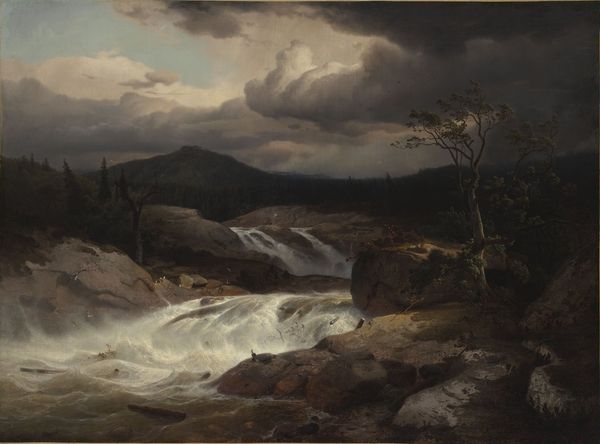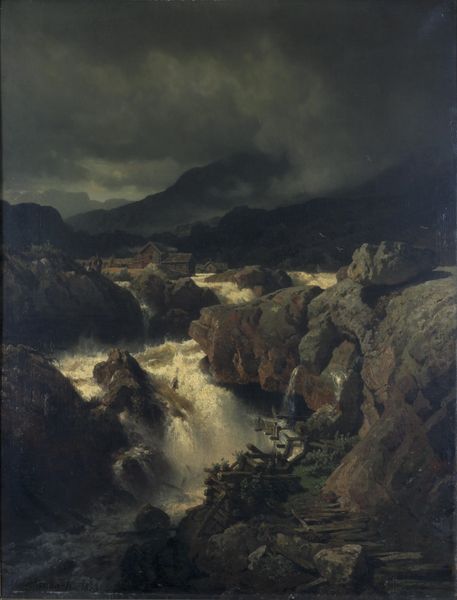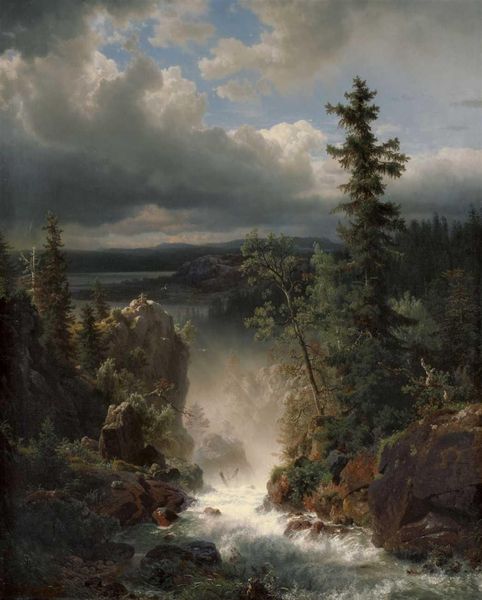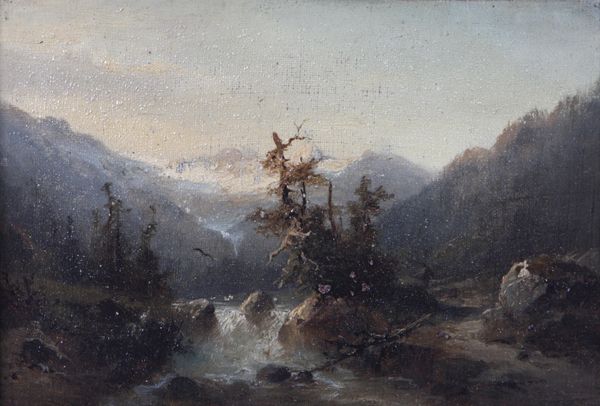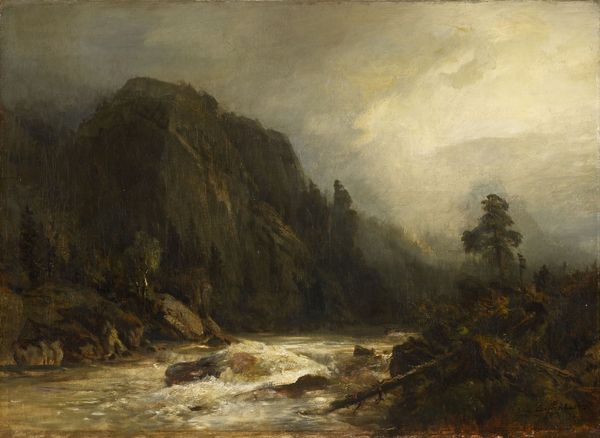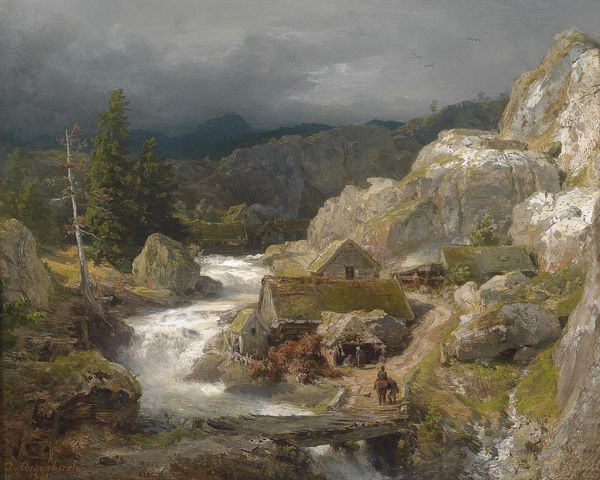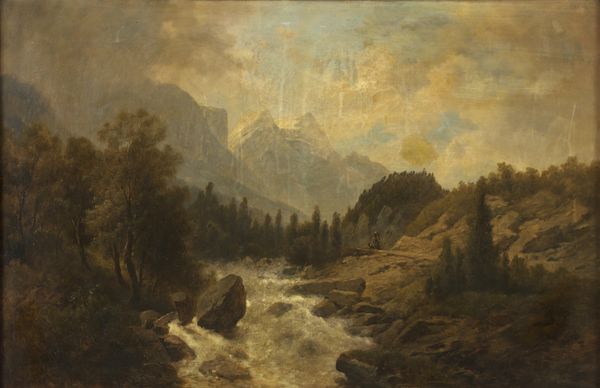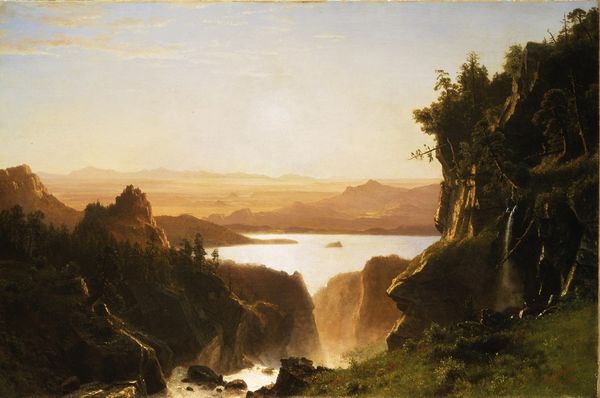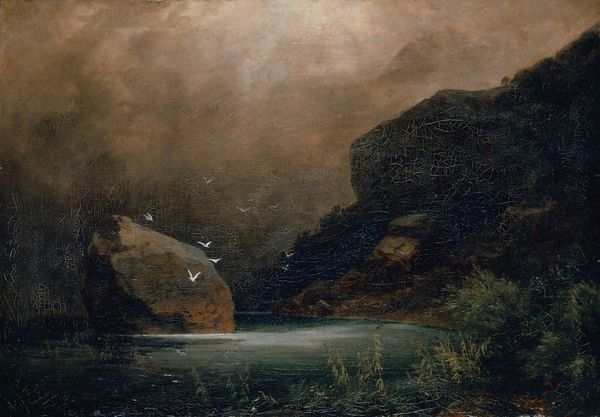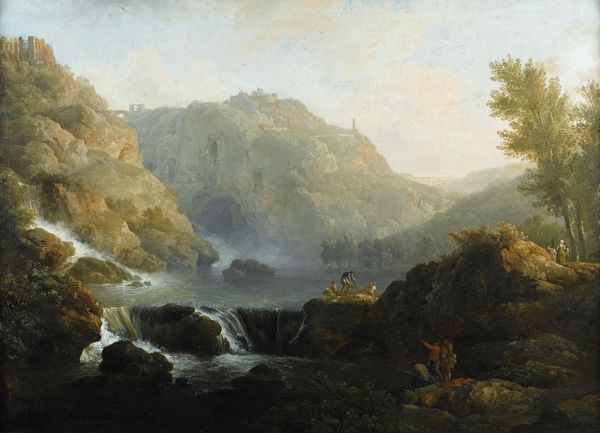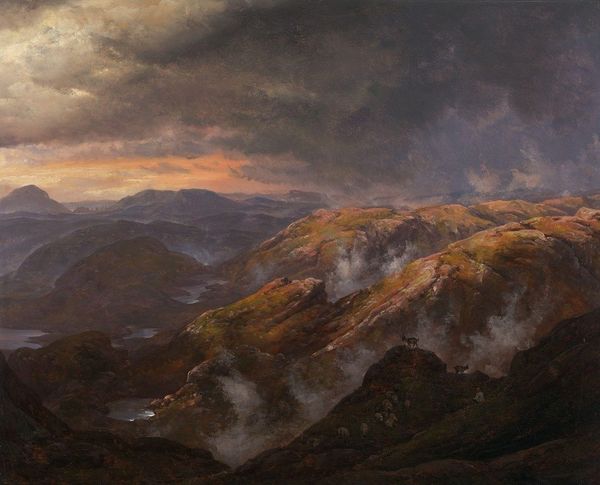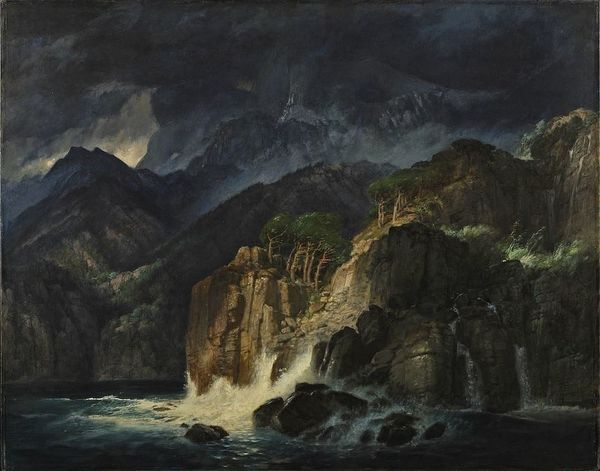
Mill in the forest on a falling mountain waterNorwegian mountain landscape with a mountain stream 1843
0:00
0:00
painting, plein-air, oil-paint
#
painting
#
plein-air
#
oil-paint
#
landscape
#
nature
#
romanticism
#
hudson-river-school
#
northern-renaissance
#
realism
Copyright: Public domain
Curator: This landscape, dating from 1843, is attributed to Andreas Achenbach. It's known as "Mill in the forest on a falling mountain waterNorwegian mountain landscape with a mountain stream" and demonstrates many features typical of its period. Editor: Initially, I find the composition deeply unsettling. The dark sky looming over the torrent of water, it feels almost apocalyptic. The small mill house at the center seems incredibly fragile, battling against the raw power of nature. Curator: Precisely. Consider that this was created in the midst of immense social upheaval across Europe, and Achenbach reflects the anxieties of that time by contrasting the human endeavor with the force of nature. We can discuss the romanticism as a social narrative too, what do you think? Editor: The Romanticism really makes sense here; water is, of course, such a potent symbol—purity, renewal, destruction. Look at how Achenbach renders the waterfall. The light glinting on the white foam suggests purification, washing away the old order and paving the way to build anew but always bearing the power to destroy that mill house. Curator: Absolutely. And within the socio-political framework, we can consider that the watermill as both symbol of industrial progression and of human limitations against such wildness. The building of infrastructure versus forces of nature. Editor: The image also speaks to the insignificance of humankind when confronted with nature's grand designs and larger systems that are at play. The figures that barely represent the watermill appear lost amidst the imposing mountains and churning currents of that body of water. Curator: That’s insightful. Achenbach’s painting invites the viewer to confront their own position within larger historical, social, and even ecological narratives. It prompts questions about our relationship with the world around us. Editor: Yes, these persistent visual motifs that keep echoing from the Romantic to contemporary views on ecological disaster help us contemplate both the symbolic power, but more importantly how art might continue these very pertinent discussions. Curator: It certainly has left me looking through an entirely different perspective. Editor: Indeed. There is so much hidden symbolism here. It encourages further study of historical narratives and visual art.
Comments
No comments
Be the first to comment and join the conversation on the ultimate creative platform.
